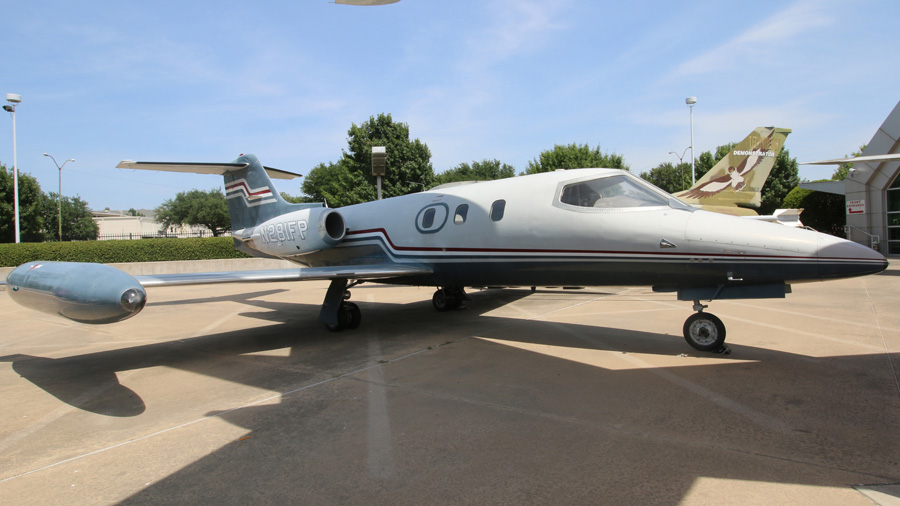| Learjet | ||||||||||||||||||||
|
Model 24 # |
||||||||||||||||||||
 |
||||||||||||||||||||
|
Photo: Robert Deering
7/21/2018 Frontiers of Flight Museum Love Field (DAL) Dallas, Texas |
||||||||||||||||||||
|
The Learjet 24 is an American six-to-eight-seat (two crew and four to six passengers) twin-engine, high-speed business jet, which was manufactured by Learjet as the successor to the Learjet 23, which was limited to 12,500 pounds (5,700 kg) gross weight. Engineers designed the model 24 to accept up to the full 13,500 pounds (6,100 kg) gross weight permitted by FAR-25 standards. Other improvements introduced in the Learjet 24 included:
With these changes, the LJ24 became the first business jet to be certified under FAR-25.
The first flight of a Learjet 24 took place on January 24, 1966. From May 23 to 26, 1966, a Learjet 24 flew around the world in 50 hours and 20 minutes flying time as a demonstration of its capabilities. Different variants were the 24A, B, C, D, E and F, with changes of takeoff weight, in-fuselage fuel tank, range, cabin and engines.
Altogether 259 Model 24s were built, and in 2001, there were still 210 Learjet 24s in use. Thirty-nine LJ24s have been lost through accidents. Learjet 24A Standard version. Converted from existing Learjet 23. Takeoff weight 13,499 pounds (6,123 kg). FAA certified on November 9, 1966. 81 aircraft built. Learjet 24BImproved variant, powered by two 2,950 lbf (13.1 kN) thrust General Electric CJ610-6 turbojet engines, and 13,499 pounds (6,123 kg) maximum take-off weight. FAA certified December 17, 1968. 49 aircraft built. Learjet 24CA light-weight version of the 24B, fuselage tank not fitted which would have caused a reduction in range. The Learjet 24C project was abandoned in December 1970. Take-off weight 5,675 kilograms (12,511 lb). None built. Learjet 24DSimilar to Learjet 24C, however by changing surface tanks range and takeoff weight were increased to 6,129 kilograms (13,512 lb). Round cabin windows replaced by angular. FAA certified July 17, 1970. Replaced the 24B in production. A reduced gross weight (restricted to 12,500 pounds (5,700 kg) version was also available (the 24D/A). 99 built. Learjet 24D/ALight-weight version with a restricted take-off weight of 5,669 kg (12,500 lb). Learjet 24E and 24FTwo new versions were announced in 1976 the 24E and 24F, they introduced a new cambered wing and aerodynamic improvements to reduce stall and approach speed (Century III wing). The 24E did not have a fuselage fuel tank for higher payload but shorter range. Some 24E models had the fuselage tank installed later to restore range. Powered by two 2,950 lbf (13.1 kN) thrust General Electric CJ610-8A turbojet engines. On April 15, 1977, the FAA approved extended ceiling to 51,000 feet (16,000 m), the highest level then achieved in civilian aviation. 29 aircraft built. SOURCE: Jane's All The World's Aircraft 1976–77 |
||||||||||||||||||||
|
||||||||||||||||||||
